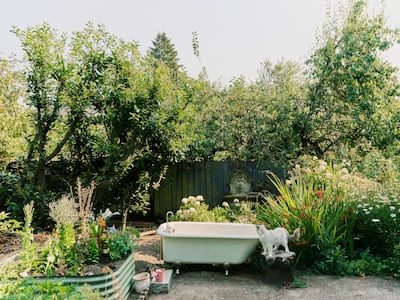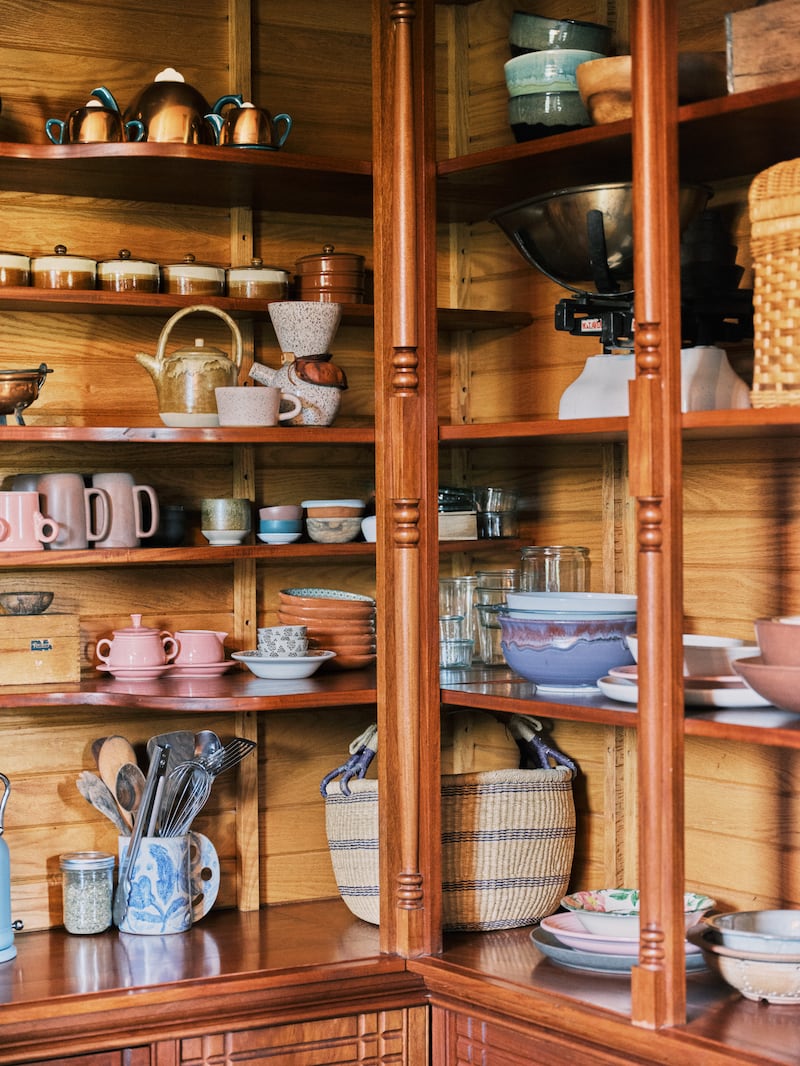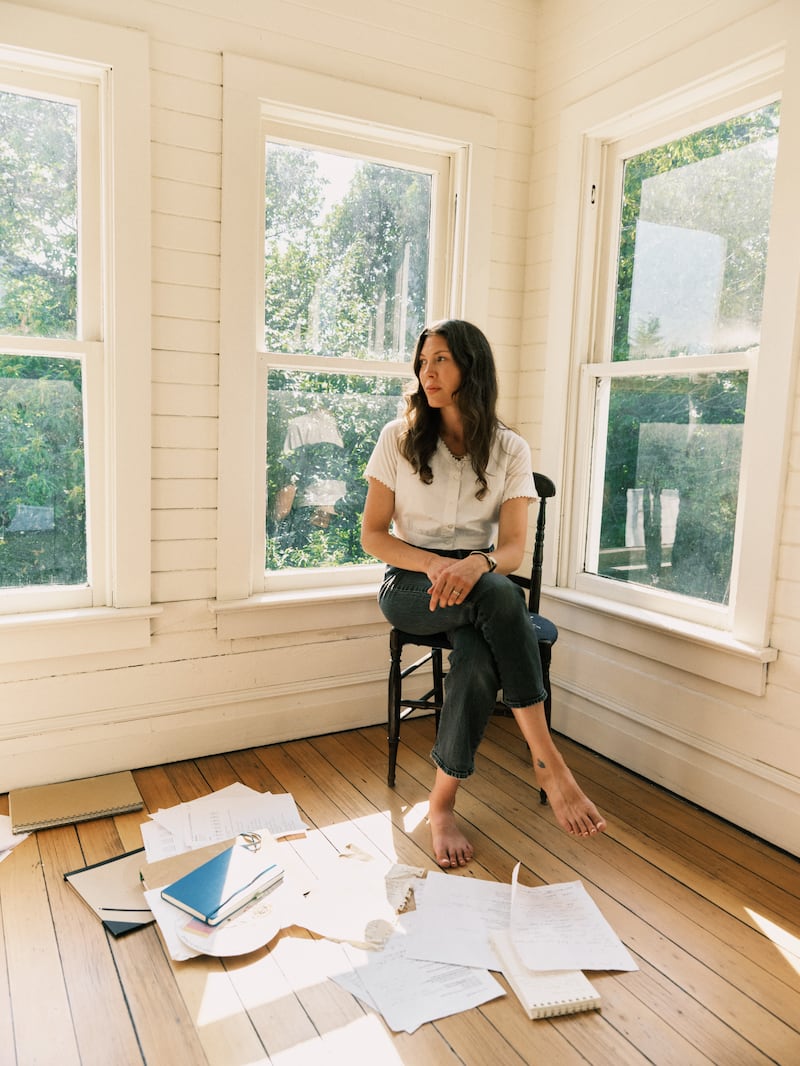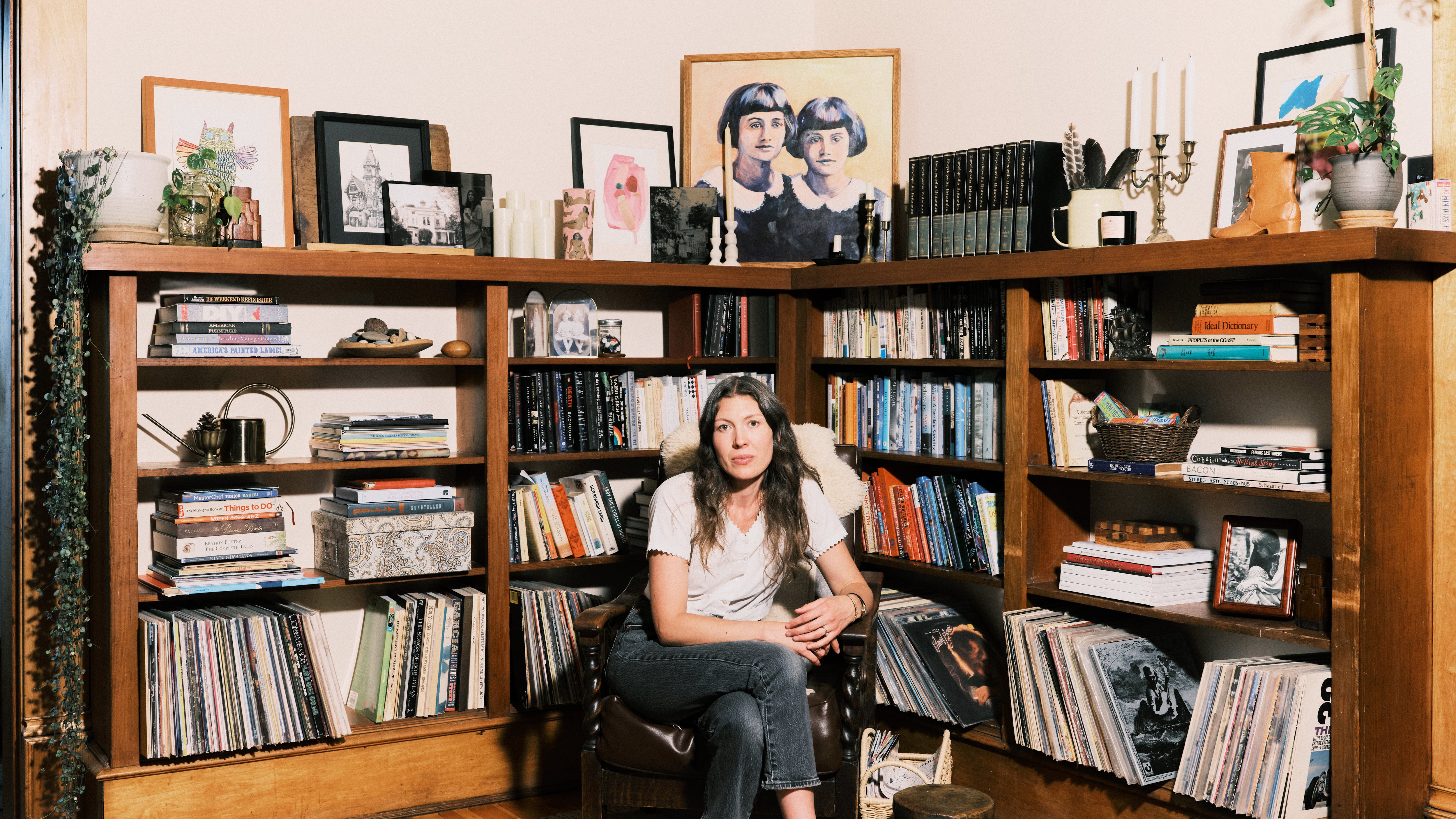Walk past the sequoia grove, up a gravel trail and through a white picket fence on a hot July morning and there is singer-songwriter Alela Diane in a long summer skirt, hand-watering her veggie garden on her half-acre estate. Behind her is her 1892 Victorian farmhouse—one of the founding homes of the Woodstock neighborhood, though technically now in Eastmoreland—where she has lived since 2021 with her young family. It’s a stunner, the kind of home where people crane their necks and slow-walk to see it from Southeast César E. Chávez Boulevard and then call out to her in the garden, “I love your house!”

The white exterior has all the detailed millwork characteristic of a Victorian, plus three deep porches, and is surrounded by grounds with cherry trees, an American chestnut, and big, old rhodies. There’s a clawfoot tub out there where she bathed her two daughters in the sunshine when they were younger. A third-story turret juts up above the treeline.
“I can’t believe I get to live here,” Diane, 41, says. “I’m so honored.”
If it all feels like a Disney dream, that’s because it is: The home was used in the 1998 film Halloweentown, in which a teen witch discovers her magical powers. The good witch (Debbie Reynolds) whipped up potions with her grandchildren in the kitchen. About that kitchen: It’s got an original farmhouse pantry with distinctive open cabinetry so gorgeous that a previous owner replicated it throughout the kitchen. Pocket doors to the formal dining room have clever peekaboo windows to show off the gear mechanisms inside.

But just as the movie title suggests, there is a dark side to the fantasy: woodpecker holes in the siding, widow-maker branches hanging off of trees that went unmaintained for too long in decades past. That clawfoot tub? It’s because the bathtub in the house leaked through the ceiling so Diane’s two daughters couldn’t take baths inside for the first eight months they lived there.
The turret, though. That fantasy is even greater than one might imagine, especially for a musician like Diane.
Her love of Victorian architecture was born in her hometown of Nevada City, Calif., a gold-rush town in the foothills of the Sierra Nevada with a downtown full of ornate 19th century homes. She moved to Portland in 2005, and she is an experienced Victorian-home rehabber, having previously owned one in the Hawthorne neighborhood. The Rose City has been the base of her folk music career, though she’s actually more famous in Europe. In March, she returned from touring there in support of her most recent album, 2022′s Looking Glass.
The temperature in the home rises (there is no air conditioning) as Diane gives a tour of the 5,000-square-foot mansion, starting on the main floor, winding up past the bedroom floor, and finally climbing to the finished attic space that has become Diane’s music studio. “It’s a very working-musician vibe,” she says of the piano, guitars, microphones, and other equipment strewn about. A framed poster from a London concert in 2018 adorns the wall near a closet just for her stage clothes.
One final staircase later and you’re up in the turret, or what Diane calls her tower. It’s a snug space—about 7 by 7 feet—surrounded by windows looking out on treetops. And could it be a more perfect writing location for someone known for her poetic lyrics and dreamy melodies and a record released with hand-sewn lace album sleeves?
“There’s a thread to catch up here that is not available downstairs,” Diane says. “It’s different. I come up here and it just, like, comes through a lot easier.”

Typically, Diane writes during school hours, so come summertime that plan is out the (Disney princess) window. Diane has back-burnered her songwriting for a few months while she hunkers down into family life. Her husband, Toren Volkmann, is a therapist who sees clients in the carriage house-turned-finished office space. The girls have turned an alcove off the music studio into a hidey-hole for reading and play; in the yard, they play cheetahs and hide-and-seek and make fairy gardens.
“This is the house of childhood dreams,” Diane says.
It’s also the house of adult nightmares. (She calls owning a 1892 Victorian “a lifestyle choice” or, less charitably, “a money pit.”) In her and Volkmann’s three years here, they have had to reroof, decommission a leaky oil tank, install a new furnace, and drywall and paint too many walls to count. They renovated the home’s one full bathroom in a dreamy green and pink motif. Diane picked out the vanity and designed the custom tile herself, proof-positive that some people in this world get all the talent.

There’s no interior designer to consult and no regular landscaping team to help bushwhack through the overgrown ivy, holly and clematis. The list of repairs and improvements remains long, but Diane is grateful to be the home’s steward.
“It’s such a historically intact home, and we’re just trying to do right by it,” she says.
0 of 14
You can find Alela’s music at aleladiane.com.
This story is part of Nester, Willamette Week’s annual home magazine. It is free and can be found all over Portland beginning Monday, Sept. 23, 2024. Find your free copy at one of the locations noted here, before they all get picked up! Or, order one through our store.













